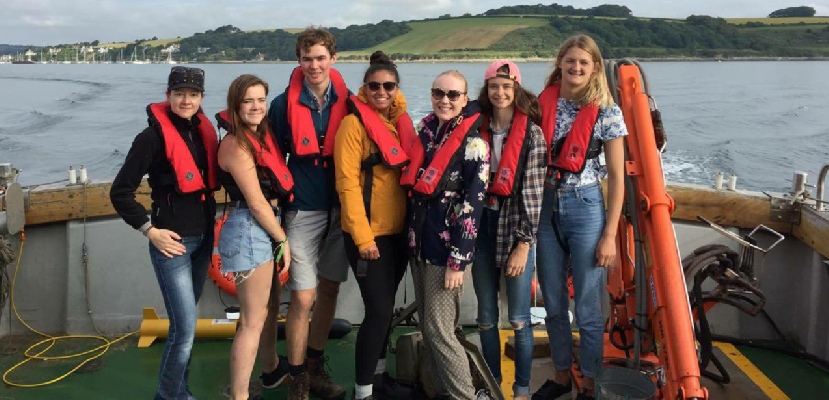 Back to top
Back to top
Introduction
Welcome to the summary of the biological, chemical and physical data collected during the Falmouth field course by marine biology and oceanography students of the University of Southampton from group 1.
The aim of this field course is to investigate the interactions between the biological, physical and chemical aspects of the water column, and relate them to the ecosystems present. Sampling took place across the Fal estuary, as well as offshore. Investigations were carried out by our group between 03/07/2017 and 14/07/2017.
Characteristics of Falmouth
Located within the South West coast of Cornwall, the Fal estuary is macrotidal and is fed by six major tributaries and 28 minor creeks and rivers, before eventually opening out into the English Channel. The shoreline stretches over 127m from the mouth of the estuary at Carrick Roads, all the way to Truro, making the Fal the third deepest natural harbour globally and the county’s largest estuary.
The estuary consists of subtidal saltmarshes, intertidal mudflats and subtidal mudflats[1], which host a wide variety of habitats including sandflats, seagrass, salt meadows and maerl beds. The Fal is protected as it is a Special Area of Conservation (SAC), but also protected under national legislation with two sites listed as sites of specific scientific interest (SSSI) which ensure that landscapes, habitats and organisms (terrestrial and aquatic) are left undisturbed[2].
In 1992 the area was affected by the flooding of the Wheel Jane mining site which caused a major metal pollution incident. Despite the closing of mines, the leaching of heavy metals at Wheel Jane and also the china clay extraction industry surrounding the Fal Estuary, continue to affect the chemistry and consequently the biology of the Fal[3].
Meet the Team
Ramona Allemann -
Bryony Costello -
Louis Chancellor -
Alycia Smith -
Caitlin Cunningham -
Freya Mitchell -
Molly Brown -
The views expressed here are not representative of the University of Southampton.
